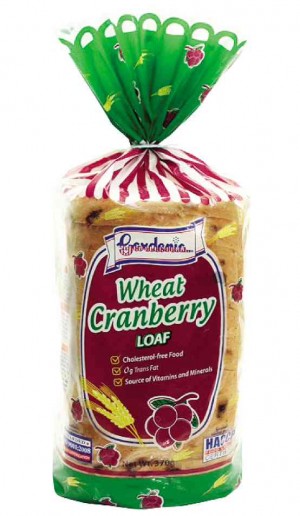Gardenia fortifies defense against rivals

Brands, no matter how strong, run the risk of losing their market leadership to hungrier and more innovative upstarts.
But when you shift your marketing perspective away from growth to defense of hard-won territory, your new activities and tactics become clearer.
Gardenia President and CEO Simplicio Umali shares how the company defended and protected its market from a big threat two years ago.
Question: One of your competitors was the first to launch a sugar-free bread variant in 2012, which captured a significant 15 percent market share of the wheat and health bread category. How did Gardenia protect itself from this competitive attack?
A: Gardenia responded by studying further the consumers to understand their behavior and to know what they truly desire. We found out that consumers crave for healthy, low calorie bread products without depriving themselves of good taste.

Gardenia believes that it will be misleading to claim a sugar-free bread as bread is made of complex carbohydrates and when we eat bread, our stomach breaks its complex structure into smaller pieces, so small that it becomes the same simple structure as sugar. Sugar-free bread becomes sugar in the bloodstream. Marketing a Gardenia sugar-free bread was thus not a good long-term strategy for us.
We decided to launch the Gardenia High Fiber Wheat Raisin Loaf instead.
Q: What was the insight behind launching Gardenia High Fiber Wheat Raisin Loaf Bread?
A: We decided to offer a better alternative to competition but will not mislead consumers. Instead we wanted to create awareness and elevate the level of consumer satisfaction in terms of taste with health benefits.
Based on our consultation with diabetologists, high fiber products are very beneficial for people who are avoiding high-sugar content foods. High-fiber foods are useful in lowering blood cholesterol, managing obesity, cardiovascular diseases and diabetes mellitus, and preventing colon cancer. However, most high-fiber products need improvements in taste and flavor.
Gardenia moved away from the sugar-free concept, and focused on high-fiber bread products with delicious flavor. The Gardenia High Fiber Wheat Raisin Loaf has both the health benefits and sweet taste that consumers look for. It is high in fiber that may promote good digestive health and may help in proper weight management. With the addition of raisins, it then also becomes a good source of anti-oxidants that may help prevent tumor formation in the body.
Q: Can you share the result of your defensive move?
A: This product outsold all the sugar-free breads of all our competitors.
Q: Market leaders who were surprised by competitive attacks tended to counter by producing new products to occupy white spaces in the market. Is this also true for Gardenia?
A: Yes. With the huge success of our High Fiber Wheat Raisin Loaf, we also introduced the Wheat Cranberry Loaf, which has the health benefits of fiber and cranberries, plus the sweet and tangy taste.
Aside from that, we also have the Slim & Fit Wheaten Bread, which is the only bread in the market that contains L-Carnitine that helps the body turn fat into energy.
It’s also a good source of fiber that may help in weight management and in reducing the risk of heart disease. This sealed Gardenia’s dominance of the health bread sub-category.
Q: What key lessons can you share about defensive marketing?
A: It is not the role of market leaders to discredit competitors, thus as a defensive marketing strategy, we came up with innovative products and hyped on the merits of our products instead of rebutting claims of competitors. We attacked directly with the launch of our High Fiber Wheat Raisin Loaf, then we immediately followed it by introducing other variants. With the product innovation and differentiation we did, consumers of sugar-free products shifted to Gardenia’s healthy indulgent products. With the continuous improvement we are doing, we created a new category that resulted in successfully attracting new and existing markets. With this, we were able to maintain our 75 percent leadership position in the wheat and health bread market category.
